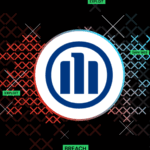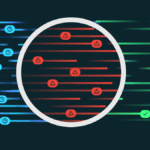Data security breaches aren’t slowing down. From exposed AWS buckets to credential-stuffing attacks on SaaS platforms, compromised identities remain the weakest link in enterprise security.
According to Verizon’s 2025 Data Breach Investigations Report, stolen credentials were the initial entry point in 22% of breaches, and a staggering 88% of basic web application attacks involved the use of stolen credentials.
That’s a sobering statistic for anyone running a security operations center (SOC). You can invest heavily in detection and response, but if IAM is brittle or misaligned with reality, attackers walk in through the front door before your SOC ever sees an alert.
This raises a hard question: are identity tools simply being misconfigured, or is there something more fundamental about IAM that makes it an uneasy fit with SOC operations?
Identity and access management: What it does and what it doesn’t
Identity and access management (IAM) is supposed to be the discipline that enables the right individuals to access the right resources at the right times for the right reasons. In practice, it’s a mesh of technologies and processes:
- Authentication: Verifying a user is who they claim to be (passwords, MFA, SSO).
- Authorization: Granting or denying access to systems or data based on policy.
- Provisioning and de-provisioning: Onboarding and off-boarding users and their access.
- Policy enforcement: Applying least-privilege and separation of duties.
SOC teams tend to see IAM as a solved layer. They expect clean, reliable identity logs for correlation, and they assume access controls are properly implemented. But those assumptions don’t hold in modern cloud environments.
Structural challenges undermining IAM in the cloud
Managing identity can seem impossible in today’s dynamic, multi-cloud reality. Even the best-engineered IAM deployments struggle to keep up with the way organizations actually use cloud and SaaS.
Multi-cloud fragmentation
Every cloud and SaaS platform implements its own IAM stack. AWS IAM bears little resemblance to Azure AD, Google Cloud IAM, Salesforce profiles, or Slack’s workspace roles. Policies, logging formats, and privilege models differ from one platform to the next. For a SOC, stitching these signals together into a single view is a constant, manual integration project, and it rarely delivers the context needed for fast triage.
Shadow IAM
End-users and contractors routinely adopt unsanctioned SaaS tools to get work done. Each new app comes with its own login method and permission model, often outside the scope of enterprise SSO. This “shadow IAM” blinds central security to who actually has access, and to what, until a breach or compliance audit exposes the gap.
Constant churn
Cloud infrastructure is ephemeral by design. Containers and serverless functions spin up and down in seconds. Teams reassign responsibilities and external partners rotate in and out. Keeping IAM policies, groups, and entitlements aligned with this churn is almost impossible with traditional provisioning workflows.
Why identity telemetry still leaves SOCs half-blind
Identity-only telemetry gives SOCs a fragmented and often delayed view of what’s happening inside cloud and SaaS platforms. By the time a login anomaly triggers an alert, sensitive data may already be long gone. To defend effectively, SOCs need to correlate identity events with actual data movement (file exports, CRM downloads, API extractions) not just authentications.
Logs are siloed and inconsistent
Each cloud provider emits its own flavour of identity logs: AWS CloudTrail, Azure AD Sign-ins, Google Workspace Audit, Salesforce Event Monitoring. Formats, fields, and retention policies differ. SOC analysts end up normalising dozens of schemas before they can even start hunting. This fragmentation delays investigation and limits the ability to see cross-platform patterns in real time.
Alerts focus on logins, not post-authentication activity
Most IAM-driven alerts fire only on login anomalies: unusual IPs, impossible travel, MFA failures. Yet attackers rarely exfiltrate data at the moment of login. They authenticate successfully (often with valid credentials) and then move laterally or siphon off data over time. Without telemetry on what happens after authentication, SOCs are effectively blind to the most damaging stages of an intrusion.
Attackers “live off the land”
Once inside, adversaries tend to operate within the normal permissions of compromised accounts. They leverage legitimate APIs, built-in export functions, or scheduled reports. Because these actions look like ordinary usage to IAM systems, they rarely trigger alerts. This “living off the land” tactic allows attackers to persist for months without detection.
The limits of identity-centric security
Identity-focused controls are necessary but insufficient, especially in a cloud-native, data-first world. IAM has evolved to authenticate and authorise with increasing precision, but it still operates primarily at the perimeter of applications, not at the point where data is actually touched. This leaves critical gaps that attackers (and sometimes insiders) can exploit.
Fine-grained identity control doesn’t equate to data-level control
A user may be correctly authenticated and authorised for a given app or resource but still able to copy, export, or mis-share sensitive data once inside. Permissions at the identity layer don’t automatically translate to protections at the data layer. Without visibility into what’s happening with the data itself, SOCs can’t distinguish between legitimate work and malicious exfiltration.
IAM policies are static and context-poor
Most IAM rules are defined once and applied uniformly. They rarely adapt dynamically to session context, device risk, or the sensitivity of the content being accessed. That means a user logging in from a new country at 2 a.m. may have the same download rights as they do in-office at midday. This rigidity undermines the principle of least privilege in practice.
The temporal gap outweighs IAM granularity
Credentials and tokens are often valid for extended durations far longer than the actual task at hand. During that window, a compromised account can operate freely within its entitlements, regardless of how fine-grained the initial permissions were. The mismatch between token lifetime and policy granularity leaves a critical enforcement gap.
From identity-centric to data-centric security
Identity-centric security asks “who are you?” and “should you be allowed in?”. These are vital questions, but no longer sufficient in a cloud-native, data-first environment. Data-centric security shifts the lens from identity boundaries to the behaviour and movement of data itself, enforcing policies directly at the object level. This approach focuses on what happens to the data once access is granted, rather than only on who is accessing it.
Modern cloud-native runtime data protection platforms bring that shift to life. They provide controls that work inside SaaS applications and across clouds, correlating identity, behaviour, and content sensitivity in real time.
Multi-SaaS visibility
A core advantage of data-centric security is a single, unified view of sensitive data across platforms like Slack, Google Drive, Microsoft 365, Salesforce, and beyond. Instead of stitching together logs from disparate IAM systems, security teams get a consolidated picture of where regulated or confidential data lives and how it flows between users and services.
Object-level policy enforcement
Data-centric platforms operate at the level of individual files, messages, or records. They can block, redact, or encrypt content in real time right where a violation happens. This is fundamentally different from IAM, which can only deny or allow access to an application or resource as a whole.
Context-aware decisioning
Policies don’t have to be one-size-fits-all. Leading solutions adjust dynamically based on user role, device posture, location, behavioural risk signals, and the sensitivity of the content. A contractor downloading a customer list from a personal laptop can trigger a very different response from an employee doing the same on a managed device.
How runtime controls enhance SOC operations
Runtime data protection gives SOC teams real-time visibility into sensitive data activity, bridging the gap between identity events and actual data risk. Instead of reacting after the fact, SOCs can now intervene while data is being accessed, modified, or shared—before any breach occurs.
Alerts with clarity
Runtime controls provide precise, actionable signals. For example: “User exported 100 customer records containing PII.” This clarity allows analysts to immediately understand the scope and severity of an event, rather than sifting through ambiguous login anomalies or generic alerts.
Automated prevention
Rather than taking blunt measures like disabling accounts, runtime tools act directly on the data. Sensitive files can be blocked, redacted, or quarantined instantly, preventing leakage without disrupting legitimate workflows. SOC teams gain enforcement power at the point of risk, not just at the perimeter.
Contextual triage
Not all data access is malicious. Runtime controls factor in context (like user role, device security posture, location, and behavioural history) to help SOCs quickly distinguish accidental mistakes from genuine threats. This reduces investigation time and ensures response resources are focused where they matter most.
Polymer’s runtime edge
Polymer adds the layer that traditional IAM alone cannot provide: autonomous, data-centric protection that operates in real time. While IAM secures access at the perimeter, Polymer monitors and enforces policies on data itself, giving SOC teams clear, actionable visibility into actual user activity across cloud applications.
- Self-learning behavior modeling: Polymer continuously learns from historical usage patterns to establish a baseline of normal behavior. Deviations from this baseline (whether accidental mis-sharing, unusual file downloads, or suspicious insider activity) are detected automatically, reducing noise and focusing SOC attention where it matters.
- Automated policy enforcement: When risky activity is identified, Polymer acts immediately. Sensitive data can be redacted, sharing blocked, or users nudged with inline guidance—all without disrupting workflows. Enforcement happens directly within applications, closing the post-access gap that IAM cannot address.
- Cross-SaaS visibility: Organizations no longer need to stitch together fragmented logs or correlate alerts across multiple platforms. Polymer provides a unified view of data activity across Slack, Google Drive, Microsoft Teams, Salesforce, and ChatGPT, giving SOCs a single pane of glass for monitoring sensitive data movement in real time.
Wrapping up
Modern breaches seldom result from malware; they follow identity failure, systemic misconfigurations, or privilege misuse. Identity tools are essential—but they weren’t designed for real-time, data-aware control across ephemeral cloud environments.
The modern security landscape demands a shift to data-centric thinking. Runtime data protection fills the blind spots left by IAM, giving SOCs visibility into actual data interactions and the ability to act immediately when sensitive information is at risk. Policies can be enforced dynamically, anomalies detected in context, and risky behavior mitigated before it ever escalates into a breach.
Don’t just manage access. Protect your data in motion. Request a demo to see how Polymer gives SOCs the visibility and control IAM can’t.









